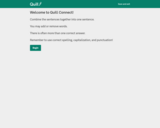
Students practice listing adjectives by combining three sentences.
- Subject:
- English Language Arts
- Language, Grammar, and Vocabulary
- Material Type:
- Activity/Lab
- Interactive
- Provider:
- Quill
- Date Added:
- 05/14/2021

Students practice listing adjectives by combining three sentences.
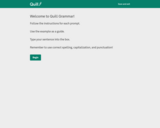
Students practice using adverbs by rewriting sentences, changing the underlined adjective to an adverb.
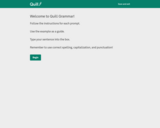
Students practice using adjectives and adverbs by rewriting sentences, choosing between the provided adverb and adjective.

Students practice deciding whether an adjective or an adverb is needed by filling in the blank with one of the provided options.
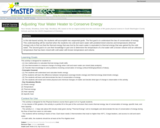
In this lab-based activity the students will use their knowledge about the law of conservation of energy to explain the loss of heat by warm water to cold water. Then, the students will use these concepts to design and carry an experiment to determine the unknown temperature of a hot water sample.
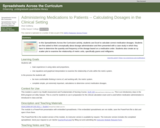
Spreadsheets across the Curriculum Module. Students build a spreadsheet to calculate proper medicine dosages using the metric system.

Hear about how respect for Earth can help us attain a more sustainable lifestyle in the face of climate change in this video segment adapted from United Tribes Technical College.

Students learn to write descriptive sentences using adjectives, adverbs, and prepositional phrases in this teacher-led lesson.

Students learn to write complex sentences that include adjectives and adverbs in this teacher-led lesson.

Ever wondered what goes on within the iconic dome building at Berkeley Lab? Our particle accelerator supports research in a wide variety of fields. In this episode, we'll build a crystal together and learn how x-ray crystallography is used to examine structures. This is the first in series of sessions focusing on the Advanced Light Source.

In this lesson, students learn how to use the Micro:bit expansion board to wire and program smart circuits with wires, LED modules, and the expansion board. They will learn to use "digital write" and "pause" to program LEDs to turn on and off at certain times.
Estimated time required: 1-2 class periods.
Technology required for this lesson: Code Editor, Electronics Kit, Laptop/Desktop, Tablet.

In this lesson, students learn how to wire and program the button modules for the Micro:bit expansion board in order to program a basketball possession arrow.
Estimated time required: 1-2 class periods.
Technology required for this lesson: Code Editor, Electronics Kit, Laptop/Desktop, Tablet.

In this lesson, students learn how to program a special motor called a servo. They will use “If” statements and the light sensor to program a light-activated sunshade.
Estimated time required: 1-2 class periods.
Technology required for this lesson: Code Editor, Electronics Kit, Laptop/Desktop, Tablet.

In this lesson, students learn how to wire and program advanced inputs and outputs like buzzers, color-changing lights, and touch sensors in order to wire and code an educational toy for VilBot's younger cousin, Lil Vil.
Estimated time required: 2-3 class periods.
Technology required for this lesson: Code Editor, Electronics Kit, Laptop/Desktop, Tablet.

EDSITEment brings online humanities resources directly to the classroom through exemplary lesson plans and student activities. EDSITEment develops AP level lessons based on primary source documents that cover the most frequently taught topics and themes in American history. Many of these lessons were developed by teachers and scholars associated with the City University of New York and Ashland University.

This is an applied project where your students will identify a user from within their community, then use the design thinking process to create a project that solves their user’s problem. In Lesson 1, each student will learn about the project overview. Then, they will choose the end user they want to work with for the remaining lessons in the project!
Estimated time required: 1-2 class periods.
Technology required for this lesson: Code Editor, Electronics Kit, Laptop/Desktop, Robotics Kit, Tablet, Video Editing Software.

In this lesson, students will find a real person in their community to act as their “end-user.” Students will contact this person by phone or email to set up a time for an interview. Students will interview their end-user and record their responses. If possible, students can even observe their end-user in action! The interview responses will be used to create an empathy map and develop a problem statement for this project.
Estimated time required: 2-3 class periods.
Technology required for this lesson: Code Editor, Electronics Kit, Laptop/Desktop, Robotics Kit, Tablet, Video Editing Software.

In this lesson, students will ideate (brainstorm) ideas for their project, sketch their favorite ideas, and put together a rough budget for their project.
Estimated time required: 1-2 class periods.
Technology required for this lesson: Code Editor, Electronics Kit, Laptop/Desktop, Robotics Kit, Tablet, Video Editing Software.

In this lesson, students will refer to their sketches and as they create prototypes for their RVR project. This lesson includes examples and tips for creating a prototype, but this is a great opportunity for students to be creative and dedicate a good amount of time making a RVR prototype that they are proud of.
Estimated time required: 4-5 class periods.
Technology required for this lesson: Code Editor, Electronics Kit, Laptop/Desktop, Robotics Kit, Tablet, Video Editing Software.

In this lesson, students will arrange a time to meet with their end-user (in person or virtually) to show them their prototype. The end-user will interact with the prototype, and the student will capture their feedback in the activity worksheet. Finally, students will take the feedback and use it to improve their prototype.
Estimated time required: 2-3 class periods.
Technology required for this lesson: Code Editor, Electronics Kit, Laptop/Desktop, Robotics Kit, Tablet, Video Editing Software.